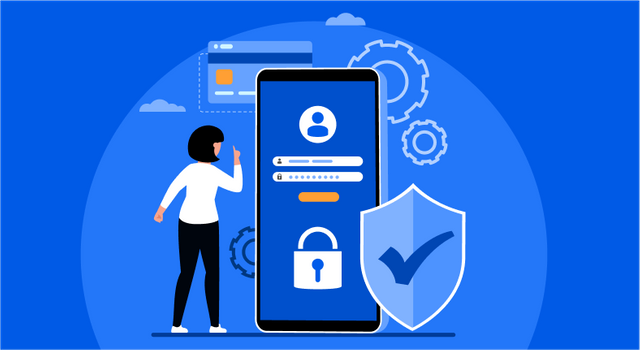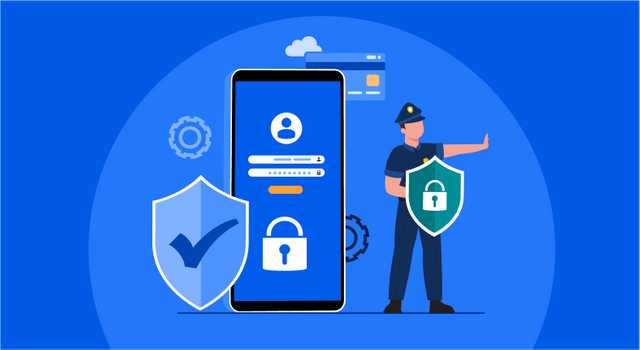A precious resource is time. When you save people time, they respond to your efforts by performing better. This idea is comparable to the (SSOA) single sign on authentication function, which provides rapid and simple access to services that facilitate company tasks.

Single sign-on solutions let users access databases and apps without re-authenticating. Save time and preserve assets.
Single sign-on solutions let users access databases and apps without re-authenticating. Save time and preserve assets.
All You Need to Know About Signing In Once
One set of login credentials can be used by a user to log in to a variety of low code no code platforms and interfaces that you wish to share with different applications, due to single sign on authentication.
By giving a centralised user authentication service, it avoids the trouble of remembering complicated usernames and passwords for numerous services with a low code platform to enable activities.
Single sign-on is not the same as directory server authentication, which uses LDAP and server-stored LDAP databases.
Directory server authentication requires the same login credentials for each application. Single sign-on requires authentication only once for many applications and databases.
A single sign-on service provider stores the user's credentials and transforms them as needed because different applications use different authentication mechanisms.
How Single Sign On Authentication Operates
Single sign-on verifies users by exchanging certificates with the service provider and identity provider. Before the information is delivered from the identity provider to the service provider, it is signed on this certificate to ensure that it comes from a trusted source.
Single sign-on authentication (SSOA) transmits identity data in the form of authentication tokens that contain information about the user, such as username, email address, and more.
Single Sign On Types
There are various single sign-on authentication (SSOA) configurations. Protocols such as Kerberos and Security Assertion Markup Language (SAML) serve as their basis.
A ticket-granting ticket (TGT) that is issued in a Kerberos-based environment once the user's credentials have been validated. The TGT is used to obtain service tickets while accessing other applications, establishing the user's identity without requiring them to be re-entered.
SAML is an XML-based protocol that enables single sign-on by allowing the exchange of security information between the SAML identity provider and the SAML service provider.
For smart card-based authentication, the user's sign-in information must be stored on a smart card. After the card has been used, the applications will not request the user's credentials again.

Single Sign On Authentication Advantages
Good custom application development is always required to provide a seamless user experience, regardless of the website's purpose. Nobody enjoys learning separate login credentials for each website. With (SSOA) single sign-on authentication, these problems can be resolved in a flash, along with numerous other advantages.
Increase Productivity
Requests for IT assistance with logins waste an enormous amount of time and resources for everyone involved. However, a single point of access for several platforms reduces waste and increases productivity.
Increased Security
Because they only have to remember one set of credentials, users are more likely to create strong passwords. As a result, the connected systems are less susceptible to password theft, which protects them.
In addition, two-factor or multi-factor authentication can enhance the security of a single sign-on system.
SSO with Risk-Based Authentication
Single sign-on authentication (SSOA) enables users to access many web-based applications with a single "key" Some individuals may view this as insecure in terms of safety. Single sign-on authentication (SSOA) combined with risk-based authentication can be utilised to assure the security of any entity inside an integrated structure (RBA).
Using RBA, you can monitor user activity on each platform alongside the security team. In circumstances of unusual user behaviour, an invalid IP address, or frequent login failures, external identification verification may be necessary. If this verification fails, the IP address or device will no longer be accessible.
This combination can be highly helpful in preventing cybercrimes, such as resource theft, website damage, and data theft.
Reduced Password Fatigue
Simplified User Experience
Shadow IT Deterrence
Company-Promoted Solutions
Single Sign On Authentication: Implementation Challenges
Although (SSOA) single sign on authentication appears to be the ideal option for the majority of enterprises, there are a few drawbacks that you should be aware of.
Integration challenges
Most firms struggle with single sign-on integration. It applies to system architecture and security procedures.
Most organisations utilise ERP or SAP-style systems that are far from the current network structure. Modern apps use cutting-edge architecture.
Divergent systems must collaborate on a common base. Each system would have a shared access point and single sign-on.
Several service providers offer single sign-on and authorise users on linked platforms. It should find the user's data in the database, let other programmes know he's logged in, and validate his identification.
Every relevant system component, such as a mobile app, online store, website, or loyalty programme, must facilitate integration. The multiplicity of connecting points makes single sign-on authentication (SSOA) problematic.
Interface consistency
Internal systems' user interfaces can be uninteresting. These systems must have a common authentication interface.
Consistency is achieved by employing the same policy and template across platforms. If the projects are produced by different teams of product owners and front-end developers, it's hard to maintain comprehensive consistency. Each product owner lends their vision to the project, resulting in unexpected outcomes.
Single sign-on authentication (SSOA) makes each platform's login screen similar. Since logging in will be required for all systems, all customer-facing platforms will use the same login window.
Scheduling
Single sign-on framework involves multiple systems. It's possible to implement the modification in stages, starting with one system and then moving on to the others. Even with stages, there will be obstacles.
Due to these problems, it's best to build and implement SSOA across all relevant systems simultaneously. The firm and its customers will benefit. The company will save time, money, and resources by avoiding trial-and-error. All platforms will have a consolidated login option.
Effect on performance
The (SSOA) single sign on authentication login technique uses a series of system and software redirects. When a user logs in or is automatically logged in due to "Remember Me," the redirection is slow.
Domain change and redirection are to blame. The user must wait. All users on all platforms will experience a delay if SSOA slows down.
There are various causes of SSOA slowness. Consider the instance where two channels are used to achieve SSOA. Only these two routes can access the SSOA login page. Simultaneously, three more channels are added. Now five channels can access the SSOA login page. Single sign-on authentication (SSOA) may slow owing to unexpected traffic, causing user delays.
(SSOA) single sign-on authentication's performance suffers from staggered installation. If login and authorisation are handled by separate systems, login time will be slower.
This difficulty can be overcome by offering the (SSOA) single sign on authentication system an intricate infrastructure to process requests quickly and effectively.
Conclusion
Single sign-on can change how users engage with apps and services to create results. Single sign-on will allow them a simple and secure way to access cloud and on-premises apps, improving cybersecurity and user experience. To learn more about SSO, visit NinjaAuth.